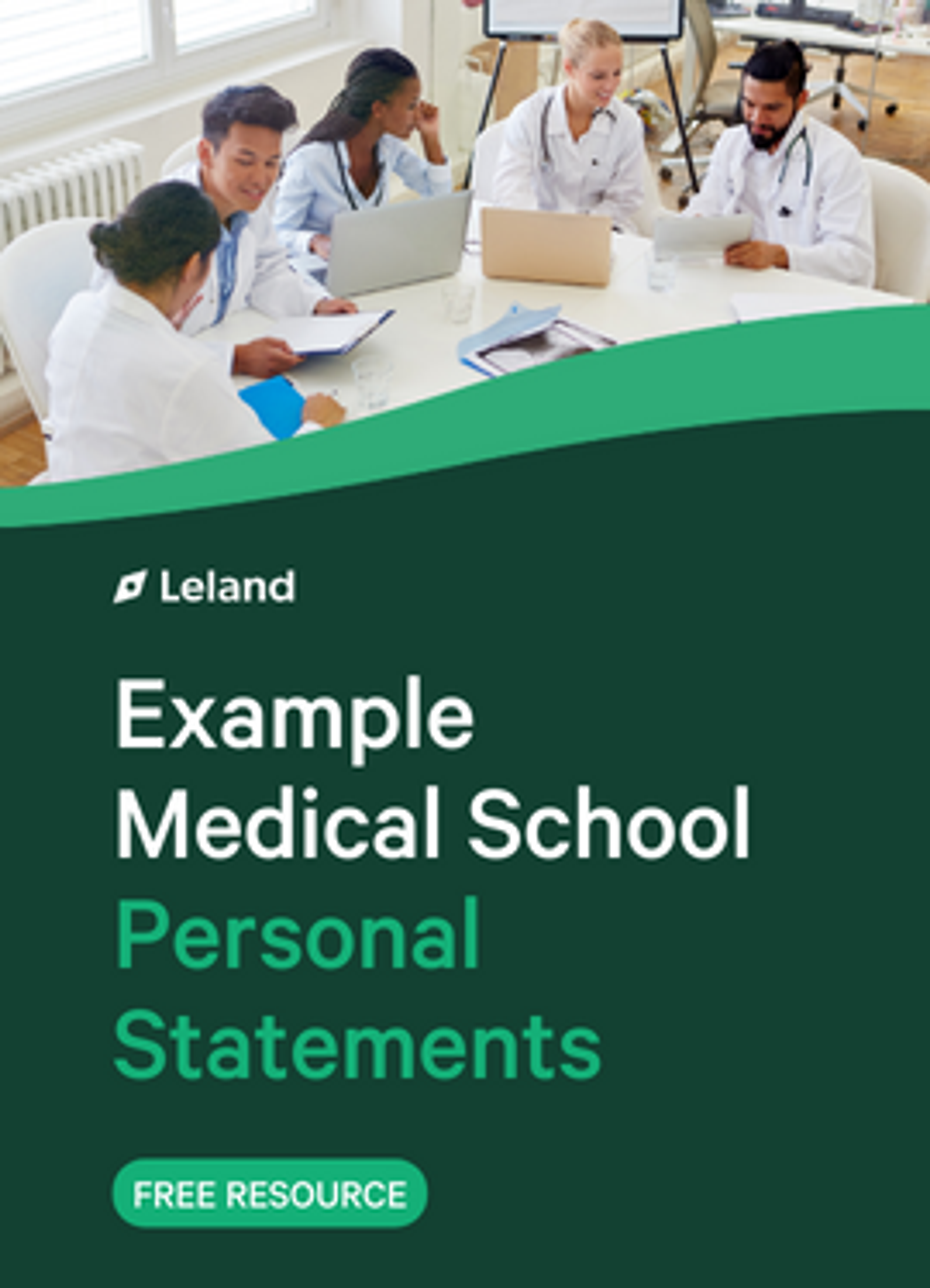Is Med School Worth It? Weighing the Pros and Cons
If you're considering pursuing a career in medicine, you may be wondering if the investment of time and money is worth it.
Posted June 30, 2025

Join a free event
Learn from top coaches and industry experts in live, interactive sessions you can join for free.
Table of Contents
Becoming a medical professional is a dream for many. Not only is it a high-paying field, but it also provides individuals with an opportunity to work in a truly noble profession that is dedicated to helping others. That being said, getting there takes a lot of hard work and dedication. Medical school is a long and arduous journey that involves years of studying, countless exams, and a significant financial investment. In this article, we'll be weighing the pros and cons of attending medical school, so that you can make an informed decision about whether it's the right choice for you.
The Benefits of Going to Medical School
One of the most significant benefits of going to medical school is the ability to help others. Medical professionals are instrumental in keeping society healthy and safe and making a real difference in people’s lives. Additionally, a career in medicine is also financially rewarding. Medical professionals are among the highest earners in the world of work, with some earning millions of dollars a year. Furthermore, there are a variety of specializations available, allowing a medical professional to choose a career path that is personalized to their areas of interest.
Another benefit of going to medical school is the opportunity to constantly learn and grow. Medicine is a field that is constantly evolving, with new research and technologies emerging all the time. This means that medical professionals must stay up-to-date with the latest developments in their field, which can be both challenging and rewarding. Additionally, the skills and knowledge gained in medical school can be applied to a variety of other fields, such as public health, research, and healthcare administration.
The Drawbacks of Pursuing a Career in Medicine
While there are many benefits to pursuing a career in medicine, there are also some major drawbacks to consider. For example, medical school is incredibly expensive and time-consuming, with medical students taking on significant debt that can take years to pay off, not to mention undergraduate student loans. Some specialties may also require further education after the standard four years of medical school. Furthermore, the profession can be highly stressful, with long hours and high-pressure work environments. Additionally, doctors often deal with life-or-death situations, which can take a significant mental and emotional toll.
Another major drawback of pursuing a career in medicine is the risk of burnout. Due to the demanding nature of the job, doctors and other medical professionals are at a high risk of experiencing burnout, which can lead to physical and mental exhaustion, as well as a decreased ability to provide quality care to patients. Burnout can also lead to a higher rate of medical errors, which can have serious consequences for patients and their families. It is important for those considering a career in medicine to be aware of the risk of burnout and take steps to prevent it, such as practicing self-care and seeking support from colleagues and mental health professionals.
The Cost of Medical School: How Much Will You Spend?
The cost of attending medical school can vary greatly depending on where you go to school and what type of program you're enrolled in. On average, prospective students can expect to pay anywhere from $50,000 to over $200,000 in tuition alone. That being said, there are options for financial aid and scholarships to help offset the cost of education. In addition to tuition, students also need to factor in the cost of books, equipment, and living expenses.
It's important to note that the cost of medical school doesn't just end with graduation. Many medical students graduate with significant debt, which can take years to pay off, especially considering the low salaries of most medical residencies, which take three to seven years to complete. According to the Education Data Initiative, the average medical student graduates with $250,995 in total student loan debt, with $202,453 in medical school debt. This debt can impact a student's career choices, as they may need to choose a higher-paying specialty in order to pay off their loans. However, there are also loan forgiveness programs available for those who choose to work in underserved areas or in certain specialties.
Financial Aid Options for Medical School Students
If you're concerned about the cost of medical school, it’s essential to look into financial aid options. Fortunately, there are a variety of scholarships, grants, and loans available to medical school students. Scholarships are often awarded based on academic achievement or financial need. Grants and loans can also help you to fund your education, but be aware that loans will need to be repaid, with interest.
In addition to scholarships, grants, and loans, there are other financial aid options available to medical school students. Some medical schools offer work-study programs, which allow students to work part-time on campus to earn money to pay for their education. Additionally, some hospitals and healthcare organizations offer tuition reimbursement programs for medical students who agree to work for them after graduation. The American Association of Medical College provides a searchable database for medical students to find scholarships, loan forgiveness programs, and other financial programs they are eligible for. It's important to research all of your options and speak with a financial aid advisor to determine the best course of action for your individual situation.
How to Choose the Right Medical School for You
Choosing the right medical school can be a daunting task. Some important factors to consider include the location, cost, curriculum, and student community. Research potential schools thoroughly and speak with current students and alumni to gain a more accurate picture of what each school is like, especially for your potential specialty.

Example Medical School Personal Statements
Read the personal statements that got applicants into schools like Harvard Medical School and the Stanford School of Medicine.
The Job Outlook for Medical Professionals
Despite the high cost and time investment of medical school, it's worth noting that the job outlook for medical professionals is very positive. According to the Bureau of Labor Statistics, employment of medical professionals is projected to grow 4% from 2019 to 2029, which is about as fast as the average for all occupations. Additionally, with an aging population and advances in medical technology, the demand for medical professionals is expected to continue to rise.
Furthermore, the COVID-19 pandemic has highlighted the importance of healthcare workers and has led to an increased demand for medical professionals. Hospitals and healthcare facilities have been hiring more staff to handle the influx of patients, and this trend is expected to continue even after the pandemic subsides.
However, it's important to note that the job outlook can vary depending on the specific field within healthcare. For example, the demand for physician assistants and nurse practitioners is expected to grow much faster than the average, at a rate of 31% and 45% respectively, from 2019 to 2029. On the other hand, the demand for medical transcriptionists is expected to decline by 2% during the same time period.
Specializations in Medicine: Which One is Right for You?
One of the great things about medicine is that there are many specialties to choose from. Some popular specializations include surgery (such as plastic surgery and orthopedic surgery), dermatology, pediatrics, and ENT. However, the most popular specializations also tend to be extremely competitive, so choosing a less popular specialization may increase your chances of matching into a strong residency program. When deciding which specialization is right for you, consider your personal interests and strengths, as well as any additional training or education that may be required.
The Importance of Networking in the Medical Field
In the medical field, networking is essential to build relationships with other professionals, find jobs or internships, and stay up-to-date with industry trends. With social media and other online tools, it's easier than ever to network with other medical professionals. Attend conferences, join industry organizations and social media groups, and take advantage of any opportunities to connect with others in your field.
Tips for Work-Life Balance as a Physician
One of the biggest challenges facing doctors is finding a balance between their work and personal lives. With long hours and a high-pressure work environment, it can be tough to carve out time for family, friends, and hobbies. However, it's critical to make time for these things to avoid burnout and maintain a healthy work-life balance. Some tips for achieving this balance include scheduling time for self-care, prioritizing your non-work commitments, and establishing boundaries with your job.
Another important aspect of achieving work-life balance as a physician is learning to delegate tasks and responsibilities. Many doctors feel like they need to do everything themselves, but this can lead to feeling overwhelmed and burnt out. By delegating tasks to other members of your team, you can free up time and mental energy to focus on the things that matter most to you outside of work.
Finally, it's important to remember that achieving work-life balance is an ongoing process. Your priorities and responsibilities will shift over time, and you'll need to adjust your approach accordingly. Don't be afraid to reassess your priorities and make changes as needed to ensure that you're living a fulfilling and balanced life both inside and outside of work.
Balancing Patient Care with Administrative Tasks: Challenges and Solutions
One of the biggest challenges facing medical professionals today is finding a balance between patient care and administrative tasks. The increasing amount of paperwork and administrative tasks has led to some physicians spending more time on paperwork than with patients. Some solutions to this challenge include streamlining administrative tasks, utilizing technology to automate and streamline administrative processes, and hiring additional personnel to handle administrative tasks, allowing medical professionals to focus on patient care.
The Role of Technology in Modern Healthcare
In modern healthcare, technology plays an increasingly significant role. Telemedicine, Electronic Health Records (EHRs), and wearables are just a few examples of how technology is changing the face of healthcare. It's essential for medical professionals to stay up-to-date with the latest technological advancements in their field to provide the best possible care for their patients.
Ethics and Professionalism: Core Values in Medicine
Medical professionals are held to the highest ethical and professional standards. Patients trust their healthcare providers to provide the best possible care, and this trust must be maintained through professionalism, honesty, and integrity. Respect for patient privacy and autonomy, the avoidance of conflicts of interest, and the use of evidence-based practices are all essential to ethical and professional behavior.
Alternative Career Paths for Those Interested in Healthcare
If you're interested in healthcare but aren't sure if medical school is right for you, there are many alternative career paths to consider. These include physical therapy, healthcare administration, and public health, among others. Other medical professionals, such as nurses and physician associates are also crucial to the medical field and work alongside doctors to ensure the best patient outcomes. These career paths allow for rewarding work in the healthcare industry without the significant financial or time commitments required by attending medical school.
Key Takeaways
- The decision to attend medical school is a personal one that depends on a variety of factors, including your interests, financial situation, and career goals
- By considering the pros and cons and weighing your options, you can make an informed decision about whether attending medical school is the right path for you
- Cost can be a major barrier for medical students, so utilizing resources such as scholarships, work-study programs, and student loan forgiveness programs can lower the costs of attendance
- Staying up to date on medical knowledge and providing the best patient care can take a toll on your mental health, so navigating work-life balance is essential to a sustainable medical career
Work with a pre-med admissions coach to map out your goals, strengthen your application, and get expert guidance tailored to your journey. Find your coach here.
If you do decide that you want to apply to medical school, check out these articles to help you begin the process:
- The Different Types of Medical Careers – and Which One is Right for You
- The Ultimate Guide to the Medical School Application Process
- How to Write a Powerful Personal Statement for Medical School
- A Guide to the T20 Medical Schools in the U.S.
- The Best 50+ Free Resources for the MCAT
- Medical Schools in New England: Top Institutions in the Region
- T20 Medical Schools: Acceptance Rates, MCAT Scores, & GPAs
FAQs
Is medical school really worth it financially?
- For many, yes—but it depends on your goals and lifestyle. You’ll take on a lot of debt, but long-term earnings can be high, especially in certain specialties. Just make sure you’re going in for the right reasons.
How much debt do most med students graduate with?
- The average med student finishes with over $250,000 in student loans. Some of that may be offset by scholarships, loan forgiveness programs, or working in underserved areas.
What’s the biggest downside to becoming a doctor?
- Burnout. The hours are long, the pressure is intense, and work-life balance is hard to maintain without intentional effort. It's a career that demands both stamina and support.
Are there other careers in healthcare if I don’t want to go to med school?
- Public health, nursing, healthcare consulting, physician associate roles, and many more offer meaningful, high-impact work without the same time or cost commitments.
How can I decide if med school is the right path for me?
- Reflect on your motivations, shadow doctors, talk to people in the field, and consider working with a coach to clarify your goals and assess the tradeoffs. Clarity now saves years later.
Browse hundreds of expert coaches
Leland coaches have helped thousands of people achieve their goals. A dedicated mentor can make all the difference.













